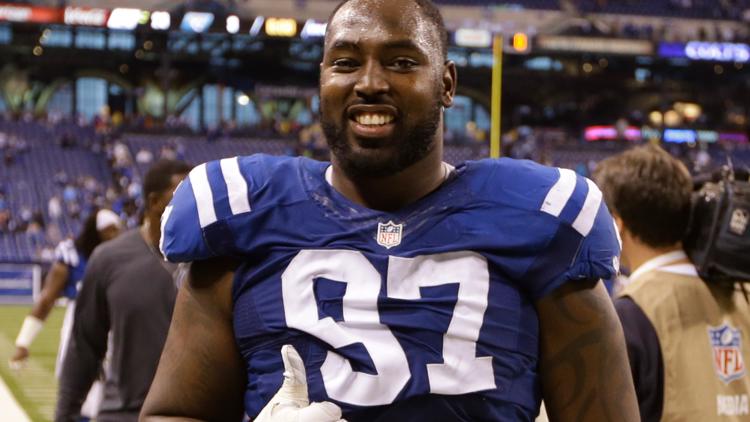How Quinshon Judkins’ rising workload can power the Browns past Minnesota
The Browns enter Week 5 in a state of transition, and with a quarterback change from veteran Joe Flacco to rookie Dillon Gabriel, the identity of the offense is shifting.

That makes Quinshon Judkins -- Cleveland’s second-round pick and increasingly featured ball-carrier -- the most important swing piece in Sunday’s matchup with the 2-2 Minnesota Vikings in London. Judkins has quietly seen his role expand each week, and the trajectory isn’t subtle.
Quinshon Judkins could be the difference in Browns-Vikings Week 5
He logged 10 carries in Week 2 against Baltimore, jumped to 18 against Green Bay in Week 3, and hit 21 last week against Detroit. That kind of intentional workload increase signals trust from the coaching staff and recognition that his skill set can carry the offense through uncertainty at quarterback.
At 220 pounds, Judkins brings the kind of density and power that wears on a front seven over four quarters. He’s not contact-shy, and he doesn’t need wide-open lanes to generate yardage. Between the tackles, he’s patient yet decisive -- able to sift through traffic, stay square to the line, and use short-area power to break arm tackles and fall forward.
If the Browns want to control tempo and slow the game down for Gabriel, feeding Judkins downhill gives them a sustainable avenue.
But labeling him as just a physical grinder misses half of what makes him dangerous. Unlike many backs of his size, Judkins has the lateral agility and burst to stress defenses horizontally. He can bounce runs off tackle, plant, and explode through cutback lanes when linebackers over-pursue.
His footwork allows him to navigate tight creases, and his vision in space makes him lethal when the edge is sealed. That ability to threaten both inside and out is exactly what puts extra pressure on Minnesota, an aggressive unit that will look to stack the box early.
However, defensive coordinator Brian Flores and Minnesota's front seven are coming off a poor showing against a less dynamic back than what Judkins presents. Kenneth Gainwell, not widely considered a high-volume workhorse, rattled off 99 yards and scored twice against Flores' group last week when the Steelers attacked both their interior and perimeter fits.
Minnesota’s linebackers were slow to fill, angles were sloppy, and defenders struggled to finish plays in space. If those breakdowns surface again, Judkins’ combo of size and suddenness could rattle off chunk play after chunk play before the game even finds its footing.
If the Vikings want to load the box to protect the A and B-gaps, Cleveland can stress the C-gap (outside shoulder of the offensive tackle) with tosses, outside zone, and counter. If they widen out to prevent edge runs or play lighter boxes to help the secondary, Judkins can gash them downhill and create manageable down-and-distance scenarios for a rookie quarterback.
That’s where the Gabriel-Judkins relationship becomes central.
With a young passer taking over, head coach Kevin Stefanski won't ask Gabriel to throw 35 times into disguised looks. Instead, the Browns can build the offense around Judkins’ versatility. His inside running forces defensive tackles to honor the interior gaps, while his ability off-tackle and in space widens linebackers and safeties. That balance creates cleaner play-action windows, slows the pass rush, and lets Gabriel play in rhythm.
And don’t overlook the cumulative effect.
Judkins punishes tacklers. By the third and fourth quarter, safeties get hesitant and arm tackles start piling up. That’s when his explosive traits show -- he doesn’t need a massive crease to flip a drive or seize momentum.
If the Browns want stability while transitioning quarterbacks, Judkins is their lever. He’s trending toward bell-cow usage, and his skill set can dictate how the game is played. In a week where Cleveland needs someone to tilt the field, Judkins fits the script.
Former Colts defensive tackle Arthur Jones dies

Jones was 39 years old.

Former Colts defensive tackle Arthur Jones died at the age of 39.
Jones played for the Colts from 2014-2016, appearing in 17 games (11 starts). He totaled 53 tackles, 1.5 sacks and four tackles for a loss; he also appeared in all three of the Colts' playoff games in 2014, collecting 11 tackles with one quarterback hit.
A native of Rochester, N.Y., Jones was a 2010 fifth-round draft pick of the Baltimore Ravens from Syracuse. Jones spent the first four seasons of his NFL career with the Ravens, totaling 120 tackles, 8.5 sacks, 13 tackles for a loss and 22 quarterback hits in Baltimore.
Jones also appeared in six playoff games during his time with the Ravens. Those playoff appearances included Baltimore's Super Bowl win over the San Francisco 49ers, in which Jones sacked 49ers quarterback Colin Kaepernick early in the third quarter of the Ravens' 34-31 triumph.
After leaving the Colts, Jones spent time with Washington in 2017 before announcing his retirement from the NFL.
Jones' younger brother, Chandler Jones, played 11 years in the NFL (2012-2022) and totaled 112 sacks.




